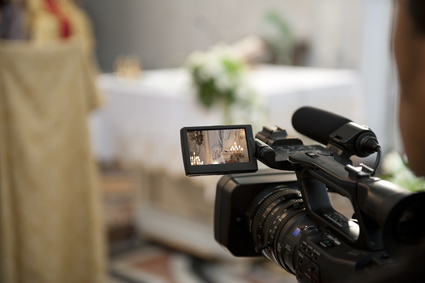4 Essential Qualities of Wedding Videographers
Think about your favorite movies, TV shows, and documentaries. What makes them stand out? Is it an iconic moment (like Rocky Balboa pumping his fists in the air at the top of the stairs of the Philadelphia Museum of Art)? A montage (who can forget Forest Gump running across America)? A more documentary style where you are a witness looking in on the events as they play out? Whatever your preference is, here is a breakdown of wedding videographers styles and how to pick the best one for you and your significant other. Remember to consult several wedding videographers before making a final selection.
The first video style is cinematic. This style is what you see at your typical blockbuster in theaters: lots of special effects, drama and emotion emphasized, and of course some montages and slow motion. This style uses Steadicam (a camera placed on a holder than moved from a remote controller) technology to create shots.
A cinematic video style also enable the wedding videographers to direct scenes if desired and tend to last between 60 and 90 minutes.
The second video style choice is journalistic. Unlike a cinematic style that can feature flash-forward, flashbacks, special effects and other significant altering, a journalistic style of shooting is in a linear (beginning to end) format and will occasionally intertwine sound bites through the video explaining different takes from different people who may or may not be involved in the scene. This style does not intrude on your guests.
Shortform is an abbreviated version of the cinematic and journalistic elements. It is typically 15 to 50 minutes in length and can also be a feature to include in a full-length DVD if you choose.
Our fourth video style is traditional. This is the typical format to expect from close friends or family members doubling as your wedding photographers. It is the longest of the style choices at 2-3 hours in length, but that may be what you want if you want to see and remember every list detail of your special day. This option is fading out in the wedding videographer industry due it’s time consuming process.
Once you select your video style you want, next is how the audio will be recorded. Where will they be microphones and sound boards? Who will be mic’d up? Officiants may not want to be mic’d up and that could pose a problem. You may also need audio recorders next to the band for the wedding and reception, the bride and groom, and on the podium for speeches, toasts, etc. depending on the size and how well the venue holds sound.
Next is the amount of editing involved. Cinematic and shortform will both extensively require this, journalistic not as much. It is a simple equation, the more time it takes for editing for time or special effects you wanted added, the quicker the bill goes up. Found out the rate the wedding videographers will charge.
The last thing to consider when selecting wedding videographers is what definition to shoot it in. High definition will probably be the case, but is it 1080 or 720? Do you multiple cameras and different levels of definition for a cinematic style? Remember this will be something you want to view 5, 10, even 20 years later, so having the most modern format wouldn’t be a bad idea even if it is cheaper to film in SD.


